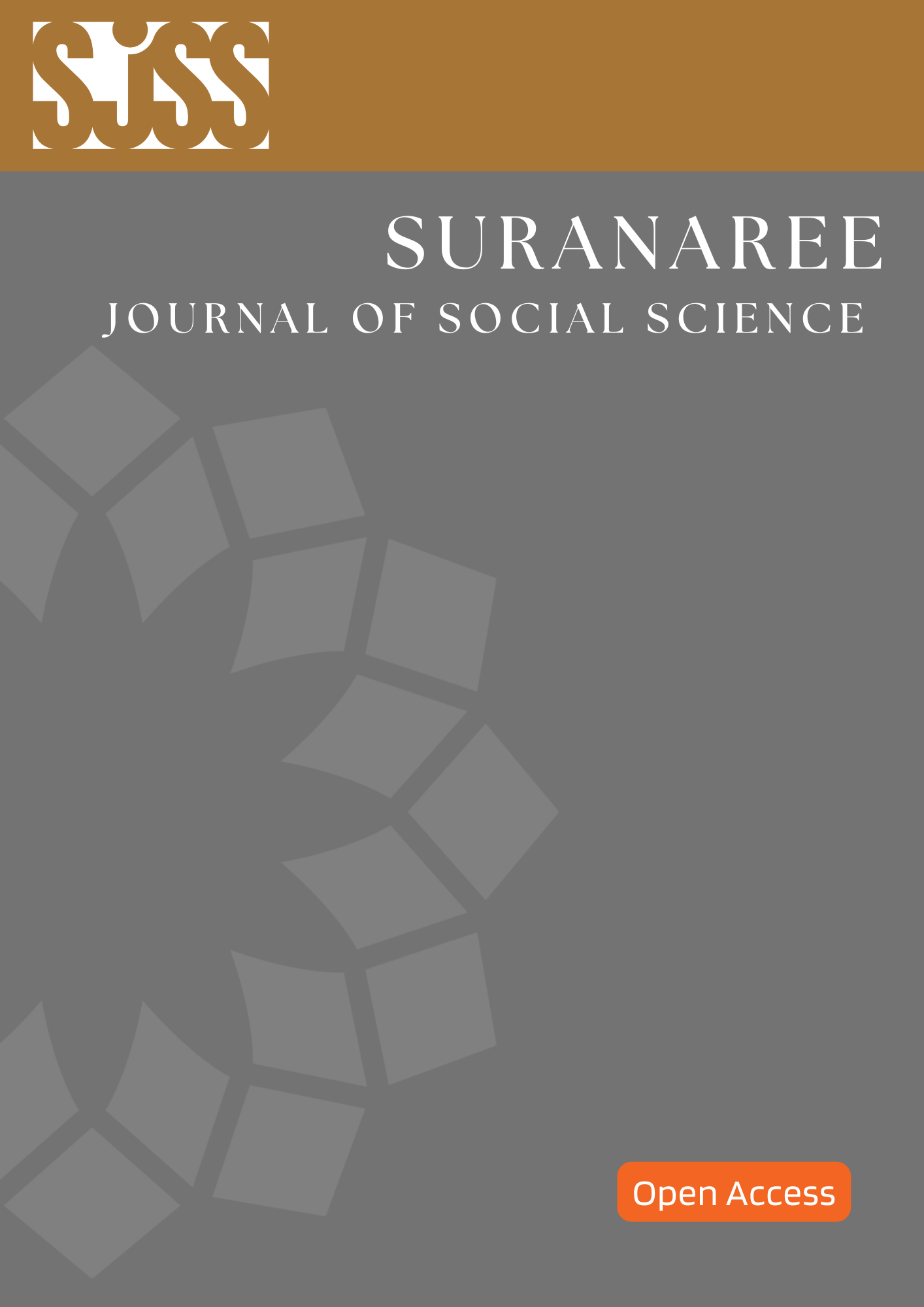Depression Situation for Thai University Students
Main Article Content
Abstract
This research article aimed at exploring the depression situation for Thai university students. The two main objectives of this research were 1) to survey the prevalence of depression for Thai undergraduate students, in this case at a Bangkok public university, and 2) to study the prevalence of depression for Thai university students by gender, years of study, etc. The reseach received permission from the university research ethics board and the analyzed data related to the study objectives. The three instruments used to collect data were: 1) The Center for Epidemiologic Studies-Depression Scale (CES-D) Thai version; 2) The Patient Health Questionnaire 2 (PHQ-2); and 3) The Patient Health Questionnaire 9 (PHQ-9). The sample consisted of 700 undergraduate students from the target university and was conducted during the 2016 academic year. Systematic sampling was used to select the subjects. Data were analyzed using descriptive statistics and the Chi-square test. The three depression questionnaires completed by the university students revealed that having a high rating for boredom, stress and loneliness was an indicator for a depressive disorder. The test of the hypothesis showed a 23.0% prevalence rate of depression for undergraduate students. The Chi-square test revealed that the percentage of depression for the university students (23.0%) was higher than for the overall Thai population (4%) with a statistical significance of 0.01. The rate of depression was found to be higher for male students than for female students, which differed from other studies.
Article Details

This work is licensed under a Creative Commons Attribution-NonCommercial-NoDerivatives 4.0 International License.
References
Angkapanichkit, J., & Intasian, S. (2020). Language of Depression in Mass Media and in Communication of Students in Thai University: A Discourse Analysis. (In Thai). Bangkok: Amarin Printing.
American Psychiatric Association. (2013). Diagnostic and Statistical Manual of Mental Disorders (5th ed.). Arlington, VA.: American Psychiatric Publishing. https://doi.org/10.1176/appi.books.9780890425596
Arunpongphaisan, S., & Vasikananon, S. (Eds.). (2015). Texbook of Depressive Disorders. (In Thai). Khon Kaen: Klungnana Vitthaya.
Buranasuksakul, T. (2015). Stress, Depression and Major Depressive Disorder. [Online]. Available:
Chunjam, S., Sangon, S., & Thaweekoon, T. (2011). A survey of depression research in Thailand. (In Thai). Ramathibodi Nursing Journal. 17(3): 412-429.
Henry, S. K., Grant, M. M., & Cropsey, K. (2018). Determining the Optimal Clinical Cutoff on the CES-D for Depression In A Community Corrections Sample. Journal of Affective Disorders. 234: 270–275. https://doi.org/10.1016/j.jad.2018.02.071
Honestdocs. (29 September 2018). Knowing Depression. [Online]. Available:
https://www.honestdocs.co/most-common-psychiatric-disorders
Hongsrisuwan, N. (2016). Depression. (In Thai). HCU Journal of Health Science. 19(38): 105–118.
Chirawatkul, S., Roungreankulkij, S. Meenongwah, J. & Huttapanom, W. (2007). Perceptions of Depression Among People of Northeastern Thailand. (In Thai). Ubon Ratchathani: Siritham Offset Printing House.
Kaewpornsawan, T., & Tuntasood, B. (2013). The Prevalence of Depression In 2nd Year High School Students in Bangkok. (In Thai). Journal of Psychiatric Association of Thailand. 57(4): 395-402.
Kongsuk, T., Loyha, S., Chirawatkul, S., Arunpongphaisan, S., Roungreankulkij, S., Sihirunyawong,
A., Charnsilp, Y., Natrangsi, J., Kenbubpha, K., Leejongpermpoon, J., & Polmeesak, J. (2007). Guidebook of Depressive Disorders Surveillance and Care: Yasothon Province. (In Thai). Ubon Ratchathani: Siritham Offset Printing House.
Kongsuk, T., Kittirattanapaiboon, P., Kenbubpha, K., Sukawaha, S., & Leejongpermpoon, J. (2008). The Prevalence of Major Depressive Disorders in Thailand Results from the Epidemiology of Mental Disorders National Survey 2008. (In Thai). Ubon Ratchathani: Prasrimahabhodi Psychiatric Hospital, Department of Mental Health.
Kongsuk, T. (2006). Depression Knowledge: The Result of Academic Evidence Review. (In Thai). Ubon Ratchathani: Siritham Offset Printing House.
Kongsuk, T. (17 December 2017). Depression can be cured. (10th ed.). [Online]. Available: www.thaidepression.com
Lortrakul, M. (2006). Things about Depression. (In Thai). Ubon Ratchathani: Prasrimahabhodi Psychiatric Hospital.
Lortrakul, M. (25 June 2017). Depression in Details. [Online]. Available www.med.mahidol.ac.th
Matichon Online. (5 April 2017). Department of Mental Health Announced April-May found high rate
of suicide because of high temperature and depression. [Online]. Available
https://www.matichon.co.th/local/news_520502
Mayo Clinic Staff. (2016). College depression: What parents need to know. Mayoclinic. [Online] Available: https://www.mayoclinic.org/healthy-lifestyle/tween-and-teen-health/in-depth/college-depression/art-20048327
Ministry of Public Health, Department of Mental Health. (13 July 2016). The Center for Epidemiology Studies Depression Scale (CES-D). [Online]. Available: http://www.dmh.go.th/test/download/files/2Q%209Q%208Q%20(1).pdf
Muijeen, K. (2017). The effect of psycho-education program on the depressive symptoms among nursing students at Thammasat university. (In Thai). Songkhlanagarind Journal of Nursing. 37(3): 48-60.
Phalittaphonkanphim, P. (2017). Depression. (In Thai). Bangkok: Amarin Health.
Prasrimahabhodi Psychiatric Hospital. (2006). Depression can be cured. (In Thai). Ubon Ratchathani: Prasrimahabhodi Psychiatric Hospital. (Brochure).
Prasrimahabhodi Psychiatric Hospital and Department of Mental Health. (2006). The System of Depresion Prevalence 2006: The Pilot Project at Yasothorn Province. (In Thai). Ubon Ratchathani: Siritham Offset Printing House.
Rosenberg, D. (2018). 1 in 5 College Students Have Anxiety or Depression. Here’s Why. The Conversation. [Online]. Available: https://theconversation.com/1-in-5-college-students-have-anxiety-or-depression-heres-why-90440
Rukkhajeekul, S. (2013). Depression and Suicidal Behaviors Among Naresuan University Students. (In Thai). Journal of Psychiatric Association of Thailand. 58(4): 359-370.
Sarokhani, D., Delpisheh, A., Veisani, Y., Sarokhani, M. T., Manesh, R. E., & Sayehmiri, K. (2013). Prevalence of Depression among University Students: A Systematic Review and Meta-Analysis Study. Depression Research and Treatment. 2013(2): 1-7. https://doi.org/10.1155/2013/373857
Suriyo, T. (2016). The Effect of a Group Counseling Program to Enhance the Social Intelligence of Adolescents at Risk as Depression. (In Thai). Master’s thesis. Srinakharinwirot University, Graduate School, Applied-Psychology.
Trade Schools, Colleges and University (14 May 2018). College Depression: Why It Occurs & How to Deal with It. [Online]. Available: https://www.trade-schools.net/articles/college-depression.asp
Trangkasombat, U., Larbboonsarp, V., & Havanond, P. (1997). CES-D as a screen for depression in adolescents. (In Thai). Journal of Psychiatric Association of Thailand. 17(3): 412-429.
Wisitpongaree, C., Kolkijkovin, V., & Techakasem, P. (2014). Depression in Primary School Student in Dusit District, Bangkok. (In Thai). Vajira Medical Journal. 58(3): 43-53.
World Health Organization. (2017). Depression Let’s Talk. [Online]. Available
http://www.thaidepression.com/www/who_depress/km_depress.pdf
Yamane, T. (1973). Statistics: An Introductory Analysis. New York: Harper & Row.


